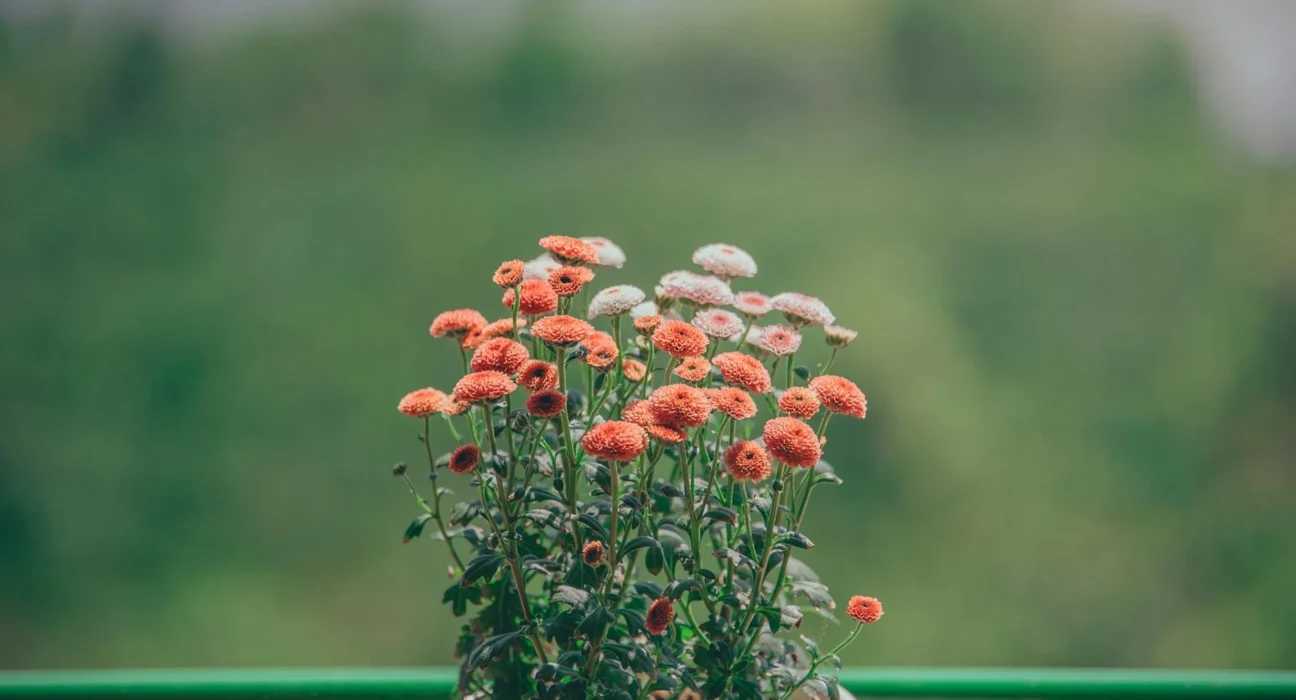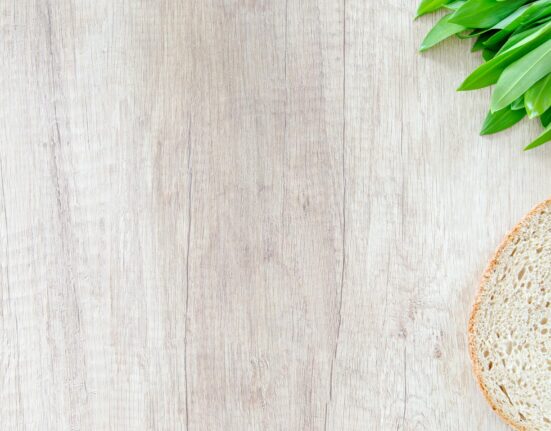Imagine snipping fresh basil, mint, or parsley just steps from your kitchen—no backyard needed. Growing your own herbs on a balcony is easier than most people think and brings real flavor to meals, from salads to pasta. You’ll cut down trips to the store, save money, and know exactly what’s in your food.
Tending a balcony garden gives you more than fresh greens. It adds a splash of green to any city space, can lift your mood, and connects you with nature, even if you live high above the street. Start small or go bold—either way, you’ll notice the fresh taste and simple joy of growing your own.
Choosing the Best Herbs for Your Balcony Garden
Starting with the right herbs can turn even the smallest balcony into a thriving green oasis. Many herbs love containers and adapt well to urban spaces, making it possible to enjoy fresh flavor and greenery just steps from your kitchen. With a little planning, you’ll be snipping fresh herbs before you know it.
Top Beginner-Friendly Herbs: Basil, Mint, Parsley, Chives, and Thyme
Some herbs are almost made for beginners. They’re forgiving, tasty, and grow well in pots. Here’s a quick guide to help you pick favorites and get your balcony garden growing:
- Basil
Care: Needs plenty of sun (at least 6 hours), regular water, and well-drained soil. Pinch off flowers to keep leaves sweet and tender.
Flavor: Sweet, slightly peppery, and perfect for Italian and Thai dishes. - Mint
Care: Thrives in partial sun to shade, prefers moist soil, and grows fast—keep it in its own pot to stop it from taking over.
Flavor: Cool and refreshing, ideal for drinks, salads, and desserts. - Parsley
Care: Does best with 4-6 hours of sun, likes even moisture and regular trimming. Both curly and flat-leaf types work well.
Flavor: Fresh, grassy, and slightly peppery, great for garnishes and salads. - Chives
Care: Likes lots of sun (at least 6 hours) and well-drained soil. Snip leaves often to encourage new growth.
Flavor: Mild onion taste, delicious sprinkled on eggs, potatoes, or soups. - Thyme
Care: Loves full sun and soil that drains easily. Let it dry out a bit between waterings.
Flavor: Earthy, lemony, and bold—a strong match for roasted veggies and meats.
These herbs are easy starters, so you can focus more on cooking and less on troubleshooting.
Selecting Herbs Based on Sunlight and Space
Space and sunlight are top priorities when it comes to picking herbs for your balcony. Each herb has its own needs, but with a smart setup, you can make the most of any corner.
- Sunlight Needs
Most culinary herbs love sunlight. If your balcony gets six hours or more, basil, thyme, rosemary, and chives will do great. For shadier spots (three to five hours), try parsley, mint, or cilantro.
Use plant trays or hanging rail planters near the brightest part of your balcony to catch every ray. - Space Savers
Even small balconies can provide a mini-herb garden. Here’s how you can fit more in:- Grow herbs in vertical planters or wall pockets.
- Mix several herbs in a large window box (just group those with similar sunlight and watering needs).
- Use railing planters to hold extra pots without taking up floor space.
- Stack pots or choose square containers to maximize every inch.
- Climate and Local Conditions
Hot, sunny balconies may dry out quickly—pick drought-tolerant herbs like thyme and rosemary. Cooler spaces keep parsley and mint happy. Start with smaller containers if strong winds are a problem, and group pots for added stability. - Smart Tips
- Choose compact, bushy herb varieties for tighter spots.
- Move pots around to track the sun over the seasons.
- Water in the morning to avoid mushy soil and plant stress.
With a little thought about light, space, and care, your balcony can become a fragrant, useful patch of green—no yard required.
Essential Supplies and Setting Up Your Balcony Herb Garden
Setting up a balcony herb garden is almost like building the foundation for a great meal. With the right supplies and a smart layout, your herbs will thrive in any outdoor space. Before you bring home those basil or mint seedlings, get your containers, potting mix, and fertilizer picked out. A proper setup makes daily care easier and keeps your plants healthy and productive.
Choosing Containers and Planters
Herbs need room for roots, good drainage, and enough space to grow. Picking the right pots isn’t just about what looks stylish—it affects plant health and how much you can harvest.
- Container Size:
Most herbs do best in containers at least 6 to 8 inches deep and wide. Bigger pots help soil retain moisture and give roots spreading room. Small pots dry out fast, so go up a size if you’re unsure. - Materials:
- Terra cotta: Classic and breathable, but dries out quickly. Works well for herbs that don’t like soggy feet, like thyme.
- Plastic: Lightweight, affordable, and holds moisture longer. Choose good quality so they don’t fade in the sun.
- Ceramic/glazed: Heavy and decorative, these stay cooler but need drainage holes.
- Fabric grow bags: Flexible and easy to move. Great for renters or anyone who’s rearranging frequently.
- Drainage:
No herb likes wet feet! Always pick containers with drainage holes, and add a thin layer of gravel or broken pottery over the hole to keep soil from washing out. Bottom saucers catch excess water and keep your balcony tidy.
You can mix hanging baskets, railing planters, window boxes, or classic pots for a lively balcony look. Match your style, but stay practical about size, material, and drainage.

Photo by Maria Orlova
Selecting Potting Mix and Fertilizer
The right soil mix can make or break your herb garden. Skip plain garden dirt—balcony pots do best with a custom mix designed to drain well and feed hungry roots.
Potting Mix:
Buy high-quality, organic potting mix. Look for a blend marked for vegetables or herbs. It will be light, fluffy, and help roots breathe. Avoid using regular soil, which can get compacted and breed bugs.For extra drainage, add:
- A handful of perlite or coarse sand (especially good for Mediterranean herbs like rosemary or thyme)
- A little compost for added nutrients
Fertilizer:
Herbs need food, but not too much. Organic and natural fertilizers keep your garden healthy with fewer chemicals.Top organic options:
- Compost: Home-made or store-bought, it naturally feeds your plants.
- Worm castings: Mild, nutrient-rich, and gentle on young herbs.
- Liquid seaweed or fish emulsion: Use as a monthly drench for a fast-acting boost.
- Slow-release organic granules: Sprinkle into potting mix every couple of months.
Feed every 4–6 weeks for leafy herbs, but skip over-feeding, which can make herbs taste bland or reduce oil content.
Creating an Optimized Garden Layout
A creative balcony layout lets you grow more herbs in less space and keeps care routines simple. Plan before you plant for a healthy, happy herb collection.
Vertical Gardening:
Hanging planters or tiered shelves use air space when floor area is tight. Try vertical pockets, wall-mounted shelves, or stacking pots for a fresh, living wall.Railing Planters:
These save floor space and often get extra sun. Use them for sun lovers like basil and thyme. Secure well, especially in windy areas.Grouping by Needs:
Group herbs with similar water and sunlight needs. For example, put drought-tolerant rosemary and thyme together, and keep mint and parsley with herbs that like more moisture.Smart grouping tips:
- Put thirstiest herbs at the bottom of tiered arrangements.
- Set sun-loving plants in the brightest spots, shade lovers behind or below.
Easy Access:
Keep your most-used herbs within reach of the kitchen door. Stagger heights and mix heights for airflow and style.
A little planning for your containers, soil, and layout pays off by making your herb garden easier to manage and more rewarding to use—all right outside your door.
Planting, Watering, and Maintenance for Thriving Herbs
Boosting your success with balcony herbs comes down to three key moves: planting them right, sticking to a simple watering schedule, and keeping your plants in check with smart care. With a few habits, your herbs can thrive in small spaces, stay healthy, and deliver heaps of fresh leaves all season.
Planting Your Herbs: Seeds vs. Seedlings

Photo by cottonbro studio
Planting herbs starts with a common decision: seeds or young plants (seedlings). Both have their place, but the best choice depends on your time, patience, and the herbs you want.
Starting from seeds:
- Pros:
- Cheaper, since a packet grows lots of plants.
- More variety—some herbs only come as seed.
- Fun to watch the whole cycle from sprout to harvest.
- Cons:
- Germination takes 1 to 3 weeks, and not all seeds sprout.
- You’ll need to water and watch baby plants closely.
- Some herbs (like rosemary) are slow to grow from seed.
Buying seedlings:
- Pros:
- Instant garden—you can snip herbs soon after planting.
- Great for beginners, as young plants are less fussy.
- Better odds for tricky herbs like basil, mint, or thyme.
- Cons:
- Costs more per plant.
- Limited to what your nursery stocks.
If you’re just getting started, try a mix—plant quick-growing herbs like basil from seed, and grab seedlings for slow starters or your favorites.
Watering and Pruning Best Practices
Proper care is what keeps your balcony garden green and full of flavor. Herbs generally like moist—never soggy—soil, and most benefit from regular pruning.
Watering tips:
- Water herbs early in the day. This gives leaves time to dry before night, which curbs disease.
- Stick your finger in the soil. If the top inch is dry, it’s time to water.
- Slow, deep watering is best—let water run through the pot.
- Use a saucer, but empty standing water so roots don’t rot.
Pruning tips:
- Snip stems just above a pair of leaves, which pushes new growth.
- Never take more than a third of a plant at once.
- Pinch off flower buds on basil and mint to keep leaves tender and tasty.
- Harvest herbs regularly to encourage bushy, full plants.
These habits help keep leaves sweet, stems strong, and harvests coming without a break.
Common Pests and Troubleshooting
Balcony herbs can attract some pesky visitors, but a little attention and a few natural helpers can keep your garden in shape.
Frequent balcony pests:
- Aphids: Tiny green or black bugs clustered on new shoots.
- Spider mites: Minuscule red bugs and fine webs under leaves.
- Whiteflies: Small white insects that flutter when a plant is moved.
- Fungus gnats: Tiny flies hovering near moist soil.
Natural fixes:
- Spray plants with a strong blast of water to knock off bugs.
- Use insecticidal soap or a homemade mix (1 part mild dish soap to 20 parts water).
- Dab neem oil on affected leaves to disrupt pest life cycles.
- Let soil dry out slightly between waterings to discourage gnats.
Companion planting for pest control:
- Plant basil next to tomatoes or parsley—basil repels mosquitoes and flies.
- Let marigolds line railings. Their scent drives off aphids and whiteflies.
- Tuck chives between pots, as their aroma keeps some bugs away.
Most herb troubles are minor and quick to fix with regular checks. If leaves yellow, check watering. See spots or mildew? Give plants more air and water in the morning. Keep an eye out for invaders, and your herbs will stay happy and productive.
Harvesting, Using, and Storing Fresh Herbs
Snipping herbs from your own balcony garden feels like a mini celebration every time. Knowing the right way to harvest, use, and store your herbs gives you peak flavor, steady plants, and less waste. This section breaks down when to pick your herbs, how to use them creatively, and easy ways to keep them fresh longer.
How and When to Harvest Herbs: Tips for Harvesting to Encourage Regrowth and Best Taste

Photo by Tima Miroshnichenko
Timing and technique are everything when it comes to picking fresh herbs. The right harvest not only boosts flavor but helps plants stay strong and bushy.
- Harvest in the Morning:
Essential oils are strongest before the midday sun hits. Snipping in the morning gives you the richest taste and aroma. - Go for Young, Tender Growth:
Target the soft, newest leaves and stems. Older leaves can taste bitter or tough, especially on basil and mint. - Encourage Regrowth:
Use sharp scissors or pinch stems just above a leaf pair. This step tells the plant to send out two new shoots, making it bushier and more productive. - Don’t Overharvest:
Pick no more than a third of each plant at a time. Even greedy basil fans should remember this! This keeps plants healthy so you can harvest again and again. - Pinch Off Flowers:
For leafy herbs, remove flower buds as soon as you spot them. Once herbs bloom, leaves can lose their punch. This applies especially to basil, mint, and oregano.
Key tip: Regular, gentle harvesting beats infrequent, heavy picking every time.
Creative Ways to Use Fresh Herbs: Ideas for Daily Meals, Teas, and Natural Remedies
Herbs in your kitchen are more than a garnish. They’re the green thread tying flavor and health together. With the right ideas, you’ll find yourself reaching for your balcony bounty every day.
- Boosting Main Dishes:
Toss chopped basil or parsley onto pasta, soup, or pizza just before serving. Stir chopped chives into scrambled eggs or creamy dips. Add thyme or rosemary to roasted veggies or chicken for an instant flavor upgrade. - Refreshing Drinks and Teas:
Muddle mint into lemonade, cocktails, or a sparkling water spritz. Steep fresh sprigs of mint, lemon balm, or chamomile in hot water for calming teas. - Herb Butters and Spreads:
Blend soft butter with chopped parsley, chives, or tarragon. Slather on bread or melt on top of veggies and fish. - Vinaigrettes and Sauces:
Shake chopped herbs with olive oil and lemon for a quick salad dressing. Blend basil with pine nuts and Parmesan for a fresh pesto. - Simple Home Remedies:
Chew fresh parsley after garlic-heavy meals to freshen breath. Soothe mild headaches with herbal teas made from mint or lemon balm. - Creative Uses:
Freeze edible flowers and herb sprigs in ice cubes for pretty summer drinks. Top yogurt or ice cream with a sprinkle of fresh basil or mint for a twist.
Herbs deliver bright flavor and comforting aromas to every corner of daily life—whether you’re cooking, sipping, or relaxing.
Storing and Preserving Your Herb Harvest: Guide to Drying, Freezing, and Other Storage Techniques
You don’t have to let extra herbs wilt or go to waste. Storing your harvest right means summer’s flavor sticks with you, even as the seasons change.
Drying Herbs:
- Hang small bunches of sturdy herbs like thyme, oregano, or rosemary upside down in a dry, airy spot out of the sun.
- For leafier herbs (basil, mint, parsley), air dry them on a rack or use a dehydrator on a gentle setting.
- Once crisp, strip leaves from stems and keep them in sealed glass jars away from light and moisture.
Freezing Fresh Herbs:
- Chop herbs like parsley, chives, basil, or cilantro and spoon them into ice cube trays. Cover with water or olive oil, freeze, and store cubes in a freezer bag.
- For larger leaves, lay them flat on a baking sheet and freeze, then store in portions.
Other Easy Storage Tips:
- Store soft herbs (basil, cilantro, parsley) stem-down in a glass of water in the fridge, like a bouquet. Cover loosely with a plastic bag.
- Wrap herbs in a damp paper towel, tuck inside a resealable bag, and refrigerate for up to a week.
- Make herb vinegars or herbal oils: pack clean, dry leaves into a bottle and cover with vinegar or olive oil. Let the flavor infuse for a few weeks, strain, and use in dressings and roasts.
A little advance prep keeps balcony harvests at your fingertips for months, with both flavor and color staying strong. Enjoy herbs fresh, cooked, stored, or sipped—they reward your effort every time.
Conclusion
Starting a balcony herb garden turns small spaces into a hub of fresh taste and better living. With a handful of pots and some care, you get greens that flavor meals, calm your mind, and upgrade your kitchen year-round. Each snip from your own plants brings clean flavor and a nod to healthier eating.
No yard, no problem—fresh herbs thrive just a few steps outside your door. Your balcony can do more than you think. Try planting a few favorites and see how easy it is to grow your own. Thanks for reading, and feel free to share your balcony stories or tips in the comments. Your next meal could be brighter right from your own home.








